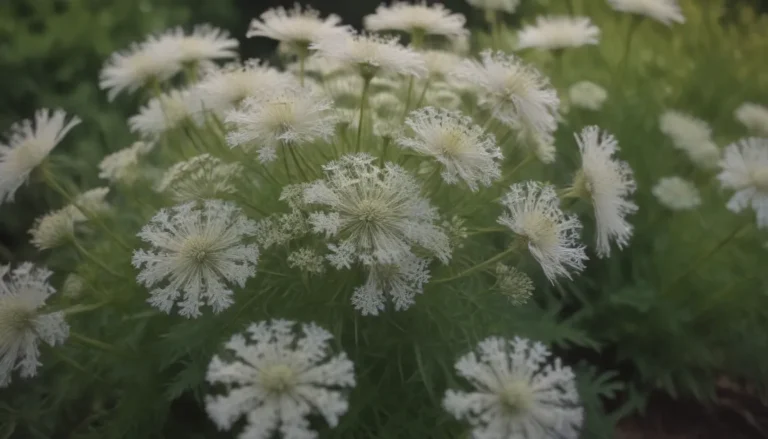Everything You Need to Know About Growing and Caring for Magnolia ‘Elizabeth’

If you’re a fan of Magnolia trees and are looking to add a unique splash of color to your outdoor space, Magnolia ‘Elizabeth’ might just be the perfect choice for you. This award-winning hybrid species offers large, fragrant blooms in a beautiful yellow shade that can brighten up your yard in the spring. But to ensure your Magnolia ‘Elizabeth’ thrives and continues to dazzle you with its beauty for years to come, there are some key care requirements you need to keep in mind.
Magnolia ‘Elizabeth’ Care Tips
Here are some important care tips to help you grow and care for your Magnolia ‘Elizabeth’ tree successfully:
Light
- Magnolia ‘Elizabeth’ thrives in full sun or partial shade. However, it’s best to avoid intensely hot afternoon sun, especially in southern states where the soil tends to be drier.
- The amount of sunlight your tree receives can affect the color of its blooms, with more intense sunlight resulting in brighter blooms.
- Aim to provide your Magnolia ‘Elizabeth’ with at least four hours of sunlight daily to promote abundant blooming.
Soil
- Ensure your Magnolia ‘Elizabeth’ is planted in well-draining soil that stays moist but not waterlogged.
- While this tree can tolerate various soil types, opt for one that is organically rich, slightly acidic to neutral, and loamy for the best results.
Water
- Pay close attention to your Magnolia ‘Elizabeth’ watering regime, especially during the establishment phase.
- Water your tree weekly during the growing season, ensuring the soil is moist but not soggy.
- Mulching around the base of the tree can help retain moisture in the soil. Just be sure to avoid mulching directly onto the trunk.
Temperature and Humidity
- Magnolia ‘Elizabeth’ is a cold-hardy hybrid that can withstand most temperatures, but it’s best to protect it from harsh winter winds.
- Be mindful of premature bud opening in warmer southern regions and potential frost damage in areas prone to late frosts.
Fertilizer
- Fertilize your Magnolia ‘Elizabeth’ in the spring before new growth appears to promote healthy blooming.
- Choose a slow-release, multi-purpose fertilizer with a balanced 10-10-10 formula to avoid directing energy towards foliage production instead of flowers.
Pruning Tips for Magnolia ‘Elizabeth’
Pruning your Magnolia ‘Elizabeth’ is essential to keep it healthy and well-maintained. Follow these pruning tips to ensure your tree thrives:
- Remove dead or damaged branches and lightly prune to encourage a compact form.
- Prune your tree between mid-summer and early fall, after flowering and before dormancy sets in.
- Focus on pruning from the top rather than cutting off lower branches to maintain a natural-looking form.
- Immediately remove any diseased branches to prevent the spread of infections.
Propagating Magnolia ‘Elizabeth’
While propagating Magnolia ‘Elizabeth’ from stem cuttings is possible, this is a patented plant, so it’s best to avoid attempting propagation. Additionally, growing this tree from seeds is unlikely due to the sterility of its flowers.
Common Pests & Plant Diseases
Keep an eye out for common pests and diseases that can affect your Magnolia ‘Elizabeth’ tree, including leaf spot fungus, magnolia scale, ants, snails, thrips, and weevils. Maintaining proper care practices can help prevent these issues from arising.
How to Encourage Blooming in Magnolia ‘Elizabeth’
The spring blooms of Magnolia ‘Elizabeth’ are truly a sight to behold. Here’s what you need to know to ensure your tree produces abundant blooms:
Bloom Months
- Expect your Magnolia ‘Elizabeth’ to bloom from late March to mid-May, depending on your location and weather conditions.
- Enjoy the beautiful blooms for up to four weeks when the conditions are right.
Flower Characteristics
- The distinctive yellow flowers of Magnolia ‘Elizabeth’ measure around 3 inches in diameter and can vary in intensity based on sunlight exposure.
- Provide your tree with ample sunlight and moisture to promote vibrant blooms.
Common Issues with Magnolia ‘Elizabeth’
When caring for your Magnolia ‘Elizabeth’, watch out for these common problems that may indicate underlying issues:
Yellowing Leaves
- Yellowing leaves can be a sign of watering imbalance, nitrogen deficiency, or natural leaf shedding.
- Adjust your watering schedule, conduct a soil test, and gradually reintroduce nitrogen if needed to address yellowing leaves.
Brown Leaves
- Brown leaves outside of the fall season may indicate late frost damage, improper watering, iron deficiency, diseases, or pests.
- Check for signs of disease or pests and address any underlying issues promptly to maintain the health of your tree.
In conclusion, Magnolia ‘Elizabeth’ is a stunning hybrid tree that can add beauty and charm to your outdoor space with its unique yellow blooms and elegant form. By following these care tips and guidelines, you can ensure your Magnolia ‘Elizabeth’ thrives and continues to delight you with its dazzling display year after year.





